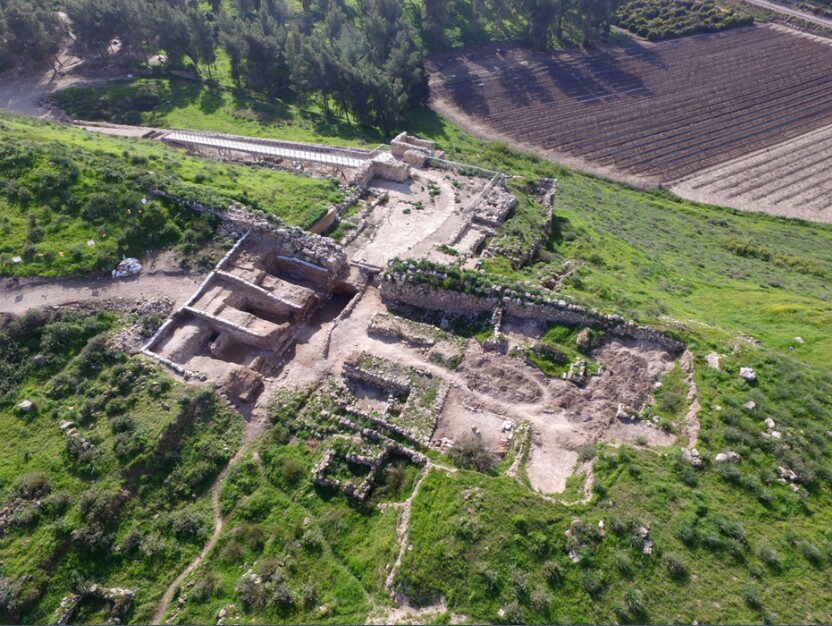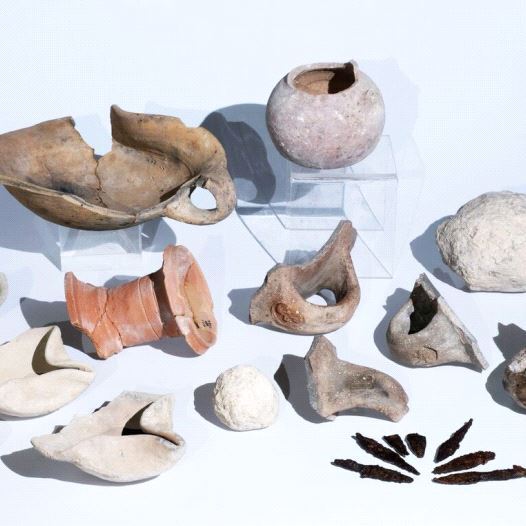Known for his sweeping reforms and dedication to eradicating the pagan idolatry that had grown rampant during his father's reign, the methods employed by King Hezekiah, who ruled over the Kingdom of Judah from approximately 727–698 BCE, have been well-documented in the Book of Kings ("He removed the high places, smashed the sacred stones and cut down the Asherah poles…"), but this is the first time that evidence has emerged to support biblical assertions of his hardline stance against religious cults.
This comes as a result of archaeological excavations conducted by the Israel Antiquities Authority that uncovered the largest shrine in a city gate from the First Temple period at at the historical Tel Lachisch site earlier this year. Measuring approximately 80 x 80 ft (24 x 24 m), the six-chambered gate is consistent with the historical and archaeological knowledge that positions Lachisch as the second-most important city in the Judahite kingdom after Jerusalem during the 8th century BC.

During its heyday, it served as a bureaucratic center, courthouse and meeting place for the city's ruling elite. "The city elders, judges, governors, kings and officials – everyone would sit on benches in the city gate," says Israeli excavation director Sa'ar Ganor. Indeed, said benches were found during the excavation, as well as other such artifacts as jars, grain scoops and jar handles bearing an official's name or a royal insignia.
Apart from being the nerve center of the city's bureaucratic system, the site also housed a gate shrine, which was accessible via "steps … in the form of a staircase [that] ascended to a large room where there was a bench upon which offerings were placed." While finding religious artifacts such as altars and ceremonial artifacts is par for the course at such sites, what has gotten archaeologists buzzing is something far more incongruous: "A stone fashioned in the shape of a chair with a hole in its center." In other words, a toilet.

Installing such an object in the Holy of Holies, a sacred inner sanctum in the shrine accessible only to a High Priest, would have been considered "the ultimate desecration" of a holy space, which was most likely what Hezekiah in mind. A purely symbolic act – lab tests have confirmed that the commode was never used – it was meant to show pagan worshippers that he meant business when he declared he was getting rid of religious cults.
While such practices, most notably King Jehu's destruction of temples dedicated to the pagan god Baal, have been documented in the Bible, this is the first time that archaeological evidence has confirmed it.
Other findings that corroborate the desecration theory include two altars with four-horned corners that had been "intentionally truncated," says Ganor. After the toilet was installed, the Holy of Holies was sealed until the site was destroyed by the Assyrian army in 701 BC. During the excavation, archaeologists also discovered such weaponry relics as slingshots and arrowheads, indicative of the hand-to-hand combat that took place at the gates.

While the gate is currently closed to the public for conservation purposes, plans for a new visitor center at Tel Lachisch are in the pipeline. Among the artifacts that visitors will be able to see when it opens are the relief found in the king's private chambers as well as an altar from Hezekiah's reign, says Shaul Goldstein of Israel's Nature and Parks Authority.
The video below will give you further insight into the discovery from Ganor.
Source: Israel Antiquities Authority







